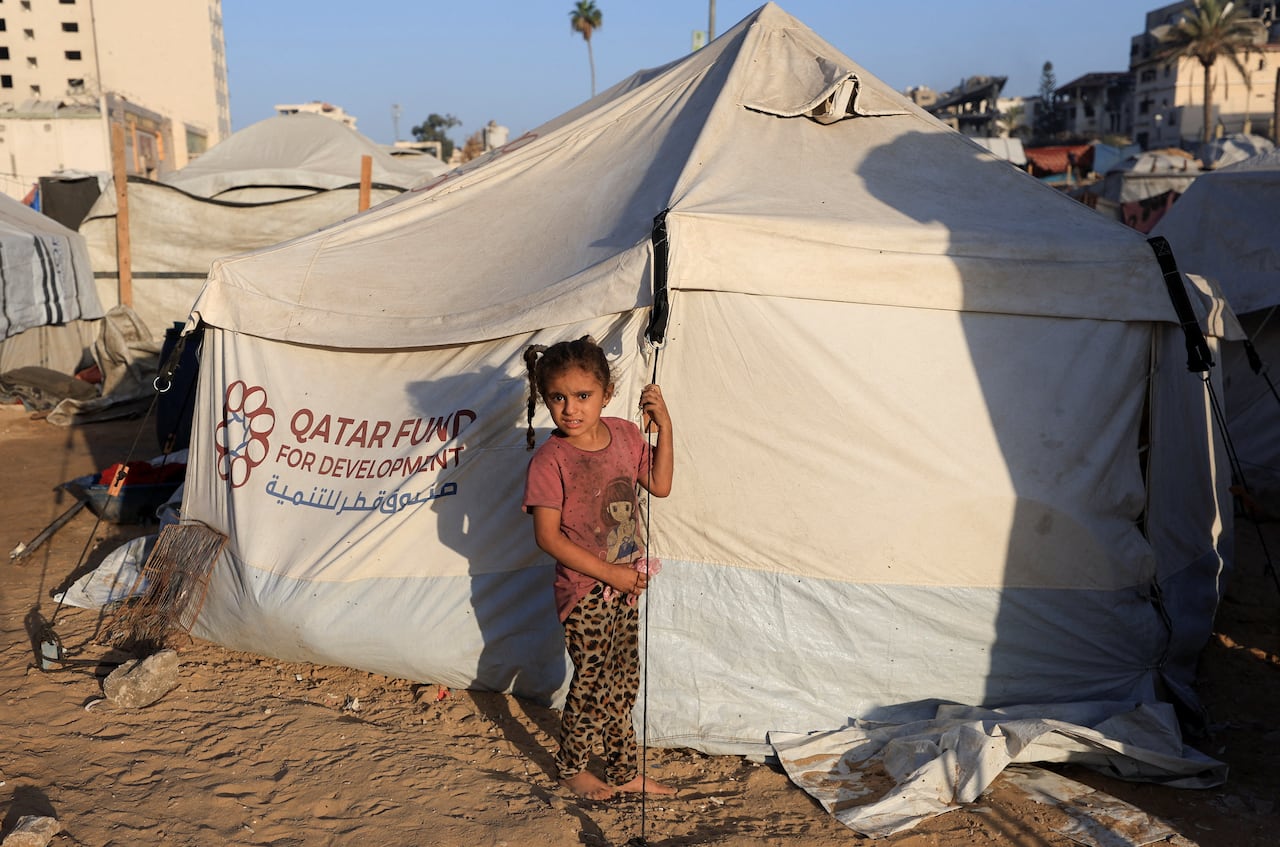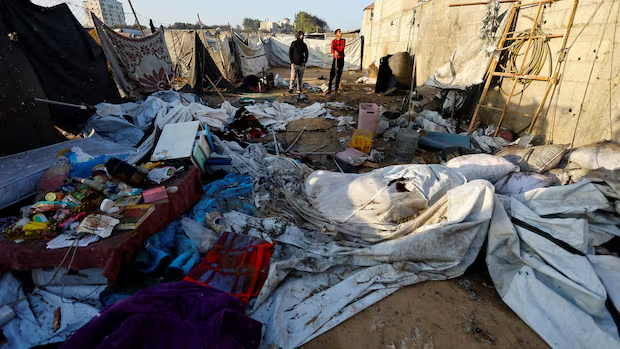U.S. envoys met Israeli Prime Minister Benjamin Netanyahu on Monday aiming to corral Israel and Hamas to get the Gaza ceasefire plan back on track after an explosion of violence over the weekend that threatened to derail the week-old truce.
Israel and Hamas have both recommitted to the ceasefire plan pushed by U.S. President Donald Trump since Sunday’s flare-up in which a Palestinian attack that killed two soldiers prompted an Israeli bombardment killing at least 28 people in Gaza.
However, with even the first stages of the truce shaken by repeated flashes of violence, including on Monday, it is far from clear whether the U.S. will be able to keep pressure on the two sides and maintain momentum to end the conflict.
The U.S. envoys, Steve Witkoff and Trump’s son-in-law Jared Kushner, were expected to push to shore up the truce and then start talks on the next, more difficult, phase of the 20-step plan during their visit.
U.S. Vice President JD Vance was also due to visit Israel on Tuesday, Israel’s airports authority said.
High level U.S. diplomacy in the region, with talks also due later on Monday with Hamas in Egypt, underscore the importance of cementing the ceasefire to Trump, who last week proclaimed “the historic dawn of a new Middle East.”

Gaza’s Health Ministry said 80 people have been killed and 303 were injured since Oct. 11, a day after the first phase of the ceasefire deal went into effect.
Mahmoud Al Hindi, 18, says residents in the Gaza City area were not given a warning before airstrikes on Sunday hit a building in his neighbourhood.
“We had still believed that the situation is fine and the ceasefire is still in place and fighting was halted,” Al Hindi told CBC News freelance videographer Mohamed El Saife.
“Then suddenly, while we were sitting near the window, [Israel] struck the home above us.”
On Monday, Palestinian medics said three more people had been killed by Israeli tank fire near the “yellow line” demarcating Israel’s military pullback inside Gaza from the main populated areas. The Israeli military said forces had fired at militants who crossed that line. It did not provide evidence.
Civilians confused about the yellow line
Gaza City residents said they were confused about the line, with electronic maps available but physical markings not established yet on most of the route.
“The whole area is in ruins. We saw the maps, but we can’t tell where those lines are,” said Samir, 50, who lives in Tuffah.
Israel’s military on Monday published video showing bulldozers towing yellow blocks into place to mark out the line.
Witkoff and Kushner’s visit to Israel, aimed at discussions on the next phase of Trump’s complex ceasefire plan, was scheduled before Sunday’s flare-up in violence, according to U.S. and Israeli sources.
Israel’s military said it has resumed enforcement of the ceasefire in Gaza after launching a wave of airstrikes and halting aid following accusations of Hamas militants attacking its soldiers.
Trump said the ceasefire he brokered was still in place. Hamas leadership, he said, may not be involved in the violations. “We think maybe the leadership isn’t involved in that,” he told reporters aboard Air Force One.
Israel is unlikely to publicize any progress in the talks until the remains of more hostages are returned, and it believes Hamas could hand over up to six more bodies immediately out of the 16 still in Gaza. Other bodies may be hard to recover because of destruction in the enclave.
Despite an earlier threat to withhold supplies from Gaza over the brief truce breakdown, an Israeli security official said aid convoys would continue to enter the enclave.
However, it added that the Rafah border crossing between Gaza and Egypt would remain closed to the movement of people.
Remains of hostages still to be recovered
Witkoff and Kushner’s visit to Israel, aimed at discussions on the next phase of Trump’s complex ceasefire plan, was scheduled before Sunday’s flare-up in violence, according to U.S. and Israeli sources.
However, Israel is unlikely to publicize any progress in the talks until the remains of more hostages are returned and it believes Hamas is able to hand over up to six more bodies immediately, out of the 16 still in Gaza. Other bodies may be hard to recover because of destruction in the enclave.
Hamas said on Sunday it had located another hostage body that it would return to Israel if conditions allowed. On Monday, Israel’s Kan public broadcaster reported that preparations were being made for the transfer of a dead hostage.
Meanwhile, Egypt will host talks in Cairo on Monday with Khalil Al-Hayya, Hamas’ exiled Gaza chief, over ways to follow up on implementing the ceasefire, the group said in a statement.
Israel is restricting aid into Gaza saying Hamas has not lived up to terms of the ceasefire because bodies of some hostages remain in Gaza. Hamas says it needs help extracting bodies under rubble, while aid groups say that even under the ceasefire, not enough critical supplies are getting to Gaza City.
A Palestinian official, close to the talks, said the group’s delegation would discuss ways to push forward the formation of a technocrat body to run Gaza without Hamas representation.
Israel has not agreed to the idea in the past and insisted Hamas be stamped out of the enclave, defeated and disarmed, a demand the group never accepted.
Hamas and other allied factions reject any foreign administration of Gaza, as envisaged in the Trump 20-point plan, and it has so far resisted calls to lay down arms, which may complicate the implementation of the deal.
With the truce still uncertain, Gaza residents fear more violence.
“I felt my heart dropping to the ground, I felt the ceasefire collapsed,” said Abu Abdallah, a Gaza City businessman, displaced in the central Gaza Strip.
“What happened yesterday made people go crazy to buy food, greedy merchants hiked the prices, the deal looks so fragile,” he told Reuters via a chat app.
Source link








